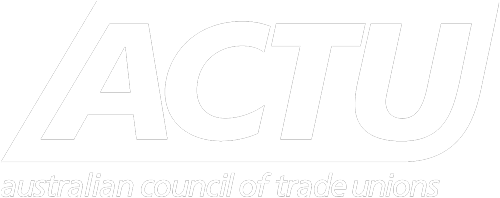Overview
Monetary policy and the work of the Reserve Bank of Australia (RBA) has a profound impact on the lives of Australian workers.
While the RBA has the statutory goals of “the stability of the currency, the maintenance of full employment, and the economic prosperity and welfare of the Australian people”, in practice, it has long preferenced price stability, and in particular inflation control, ahead of its other goals, including full employment.
Its inflation target of 2-3% on average over the cycle set since 1993 in successive Statements on the Conduct of Monetary Policy, has contributed to periods of elevated unemployment and wage stagnation. For example, recent research by Leigh and Gross (2022) using the RBA’s own MARTIN model indicates that had the RBA cut interest rates more aggressively in the years prior to the pandemic, approximately 270,000 additional jobs would have been created. Indeed, Australia has not seen true full employment since 1975. This has caused needless suffering for working people and is an imbalance that must be corrected.
Achieving the macro-economic goals of full employment, which the ACTU urges the Government to adopt, however should not and cannot be the sole responsibility of the RBA. It requires better coordination between fiscal, monetary and macroprudential policy, and the key institutions of government that steer them. There are many examples where this makes sense. During the 2016 – 2019 the RBA employed “excessively tight” monetary policy (Leigh and Gross 2022, Garnaut 2021), because of its concerns regarding further asset price growth and the possible emergence of an asset bubble. That arguably cost jobs and held back wage growth. But if other actions were taken by Treasury or even APRA to address these issues, perhaps the RBA would have adopted a more balanced approach. Similarly, any possible action by the Federal Government to better regulate soaring gas prices, should be taken into account by the RBA in setting interest rates.
The ACTU therefore calls for the establishment of a Macroeconomic Coordination Committee to deliver stronger coordination across government on macroeconomic policy and ensure fiscal and macroprudential policy decisions do not undermine monetary policy and or vice-versa. This is not to question the independence of the RBA, but to recognise it has a shared responsibility to achieve macro-economic goals that coordination can underpin.
The RBA’s understanding of, and projections of wage growth and employment levels in the past decade has been poor, as has its understanding and recent response to the drivers of inflation. Australia is currently experiencing elevated rates of inflation, like many economies around the world, that is being driven by non-labour costs, such as automotive fuel and construction materials, rather than nominal wage growth. This poses a problem for monetary policy making, as the RBA’s models of inflation—the expectations-augmented Phillips Curve and the NAIRU—are essentially models of wage-driven inflation. The RBA Governor has called for wage restraint, while commentators have alleged July’s 5.2% minimum wage increase handed down by the Fair Work Commission risks a wage-price spiral of the kind observed in the 1970s. Both fail to appreciate how wages are negotiated in Australia, through enterprise bargaining, the annual wage review and individual pay setting processes. There has also been almost no thought given by the RBA to the role of firms in contributing to inflation through price setting practices. The RBA needs to overhaul its models and public commentary.
Relatedly, the composition of the RBA Board is also of concern. The lay members of the board are drawn entirely from the business community. So it lacks members with a detailed understanding of wage-setting processes and other key labour market dynamics. To that end, it is important that there is a diversity of skills and experience on the board, particularly with an understanding of the real world mechanics of the labour market and wage setting systems. This is critically important at a time when the RBA is effectively asking workers in the labour market to do most of the work in addressing inflation – through their reduced spending power, and the rise in unemployment that RBA interest rate rises are implicitly seeking to achieve.
The culture of the RBA also needs reshaping. Good policymaking rests on both empirical evidence and a rigorous contest of ideas. Diversity of economic thought needs to be encouraged as well as demographic diversity. The RBA should take proactive steps to diversify the theoretical perspectives represented within its research and policy program.
Finally, RBA employees have also been impacted by the previous Federal Government’s cap on public sector wages. This has led to heavy restrictions on RBA members’ ability to negotiate genuinely agreed pay outcomes with management, and for pay rates within the RBA to be well below market expectations. However, many employees choose to remain at the Bank due to a loyalty to the organisation and the important role it plays in the Australian economy. While this is an admirable quality, in the past it has placed RBA employees at a disadvantage when it comes to achieving market competitive pay and conditions as well as reasonable workloads. The ACTU calls for genuine collective bargaining within the RBA to achieve fair pay and conditions for its staff.
…







